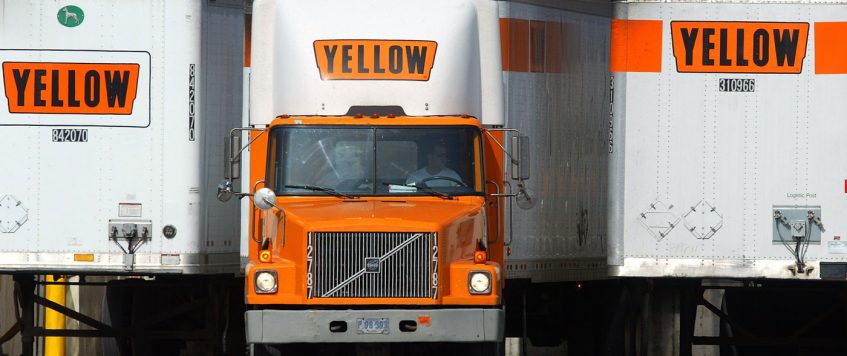-
30
Oct
Yellow’s Fall Boosts Rivals in LTL Trucking Market
The recent collapse of Yellow, one of the largest U.S. trucking companies, has unexpectedly benefited its competitors in the less-than-truckload (LTL) sector. This segment, crucial for combining freight from multiple customers into a single trailer, has seen companies like XPO, ABF Freight, and Saia experiencing a surge in their pricing power, shipment volumes, and other critical measures. The roughly 50,000 daily shipments once handled by Yellow, the nation’s third-largest LTL carrier, have been largely absorbed by these operators.
As a result, retailers and manufacturers are encountering higher rates to ensure their freight continues to move. LTL carriers are capitalizing on Yellow’s significant volumes by integrating these shipments into their existing networks. This strategy maintains tight capacity, enabling them to charge higher prices. According to Satish Jindel, president of SJ Consulting Group, the LTL industry is showing robust health and appears well-positioned for growth over the next three years from a shareholder perspective.
For instance, ArcBest reported a 20% jump in average daily shipments at its LTL carrier ABF Freight from the second to the third quarter, while a key pricing measure grew by 16%. This growth helped ArcBest counteract a decline in its broader freight operations. Nonetheless, their overall third-quarter net profit saw a decline compared with the previous year, totaling $34.9 million. ABF Freight’s president, Seth Runser, remarked during an earnings call that the departure of a significant amount of capacity from the market drove customers to their services. This shift allowed them to achieve a more optimal mix of freight in their network, improving profitability.
Yellow, a 99-year-old carrier with a unionized workforce of 22,000, ceased operations at the end of July due to heavy debt, falling revenues, and a standoff with the International Brotherhood of Teamsters union over cost-cutting plans. The company, based in Nashville, Tenn., filed for bankruptcy in August and is currently liquidating its assets, including its terminal network and equipment, under a court-supervised sale. Recent efforts to revive Yellow have emerged after a group of U.S. lawmakers urged Treasury Secretary Janet Yellen to extend the terms for repaying a federal Covid-19 relief loan granted to Yellow under the Trump administration, citing the preservation of thousands of union jobs.
Jack Cooper Transport, an automobile carrier with Teamster-represented drivers, has reportedly joined this effort. However, convincing major lenders to defer their claims, despite being assured of recovery through Yellow’s court-supervised sales, remains a challenge. The trucking market has largely moved on. Executives in the industry note that the shipments formerly managed by Yellow have now been dispersed among other carriers. Old Dominion Freight Line, for example, saw its net profit decline by 10.1% year-over-year in the third quarter, yet it reported an 8.9% increase in a key pricing measure from the previous year. This suggests that carriers are securing higher prices even as freight volumes decline. John Luciani, chief operations officer at A. Duie Pyle, observed a significant turnaround in shipping volumes from a 4% decline earlier in the year to an 11.5% growth in the quarter coinciding with Yellow’s shutdown. His company managed to secure freight at their rates rather than Yellow’s lower prices.
XPO, which overtook Yellow as North America’s third-largest LTL carrier, recorded a 7.8% increase in daily shipment count in the third quarter. Mario Harik, XPO’s Chief Executive, attributed this growth in part to Yellow’s closure, which led to a bump in XPO’s contract rates. Similarly, Saia exhibited confidence in expanding volume by adding 1,000 workers in the third quarter, an 8.9% workforce increase. The Georgia-based trucker also announced a planned average rate increase of 7.5% in early December to counterbalance rising costs.
In summary, the void left by Yellow’s exit has presented an unexpected opportunity for growth and increased pricing leverage within the LTL sector. Companies that have been agile in absorbing the displaced freight volumes are now reaping the benefits of a more tightly controlled capacity and the ability to command higher rates.

